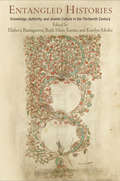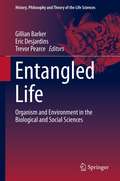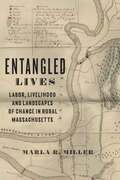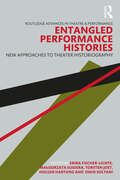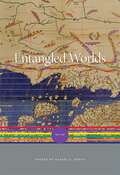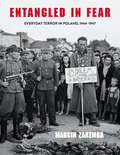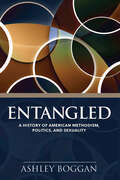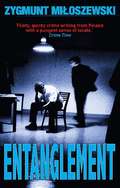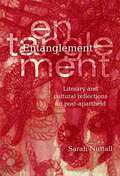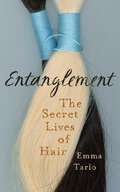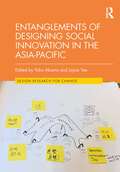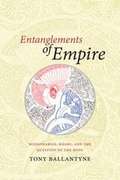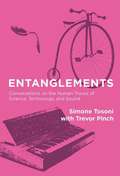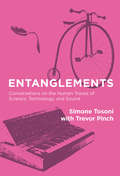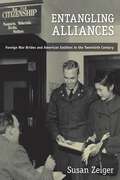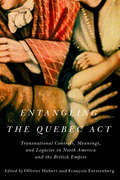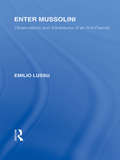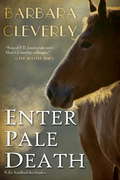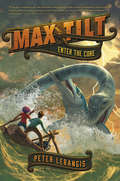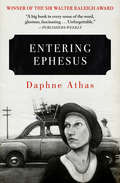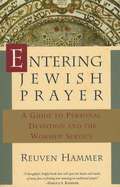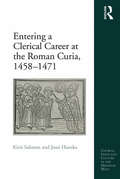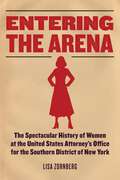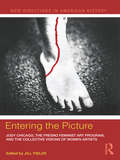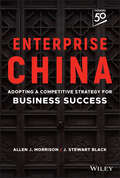- Table View
- List View
Entangled Histories: Knowledge, Authority, and Jewish Culture in the Thirteenth Century
by Ruth Mazo Karras Elisheva Baumgarten Katelyn MeslerFrom Halakhic innovation to blood libels, from the establishment of new mendicant orders to the institutionalization of Islamicate bureaucracy, and from the development of the inquisitorial process to the rise of yeshivas, universities, and madrasas, the long thirteenth century saw a profusion of political, cultural, and intellectual changes in Europe and the Mediterranean basin. These were informed by, and in turn informed, the religious communities from which they arose. In city streets and government buildings, Jews, Christians, and Muslims lived, worked, and disputed with one another, sharing and shaping their respective cultures in the process. The interaction born of these relationships between minority and majority cultures, from love and friendship to hostility and violence, can be described as a complex and irreducible "entanglement." The contributors to Entangled Histories: Knowledge, Authority, and Jewish Culture in the Thirteenth Century argue that this admixture of persecution and cooperation was at the foundation of Jewish experience in the Middle Ages. The thirteen essays are organized into three major sections, focusing in turn on the exchanges among intellectual communities, on the interactions between secular and religious authorities, and on the transmission of texts and ideas across geographical, linguistic, and cultural boundaries. Rather than trying to resolve the complexities of entanglement, contributors seek to outline their contours and explain how they endured. In the process, they examine relationships not only among Jewish, Christian, and Muslim communities but also between communities within Judaism--those living under Christian rule and those living under Muslim rule, and between the Jews of southern and northern Europe. The resulting volume develops a multifaceted account of Jewish life in Europe and the Mediterranean basin at a time when economic, cultural, and intellectual exchange coincided with heightened interfaith animosity. Contributors: Elisheva Baumgarten, Piero Capelli, Mordechai Z. Cohen, Judah Galinsky, Elisabeth Hollender, Kati Ihnat, Ephraim Kanarfogel, Katelyn Mesler, Ruth Mazo Karras, Sarah J. Pearce, Rami Reiner, Yossef Schwartz, Uri Shachar, Rebecca Winer, Luke Yarbrough.
Entangled Life: Organism and Environment in the Biological and Social Sciences
by Gillian Barker Eric Desjardins Trevor PearceThis volume explores the interactions between organisms and their environments and how this "entanglement" is a fundamental aspect of all life. It brings together the work and ideas of historians, philosophers, biologists, and social scientists, uniting a range of new perspectives, methods, and frameworks for examining and understanding the ways that organisms and environments interact. The volume is organized into three main sections: historical perspectives, contested models, and emerging frameworks. The first section explores the origins of the modern idea of organism-environment interaction in the mid-nineteenth century and its development by later psychologists and anthropologists. In the second section, a variety of controversial models--from mathematical representations of evolution to model organisms in medical research--are discussed and reframed in light of recent questions about the interplay between organisms and environment. The third section investigates several new ideas that have the potential to reshape key aspects of the biological and social sciences. Populations of organisms evolve in response to changing environments; bodies and minds depend on a wide array of circumstances for their development; cultures create complex relationships with the natural world even as they alter it irrevocably. The chapters in this volume share a commitment to unraveling the mysteries of this entangled life.
Entangled Lives: Labor, Livelihood, and Landscapes of Change in Rural Massachusetts (Studies in Early American Economy and Society from the Library Company of Philadelphia)
by Marla MillerAn enlightening look at American women's work in the late eighteenth century.What was women's work truly like in late eighteenth-century America, and what does it tell us about the gendered social relations of labor in the early republic? In Entangled Lives, Marla R. Miller examines the lives of Anglo-, African, and Native American women in one rural New England community—Hadley, Massachusetts—during the town's slow transformation following the Revolutionary War. Peering into the homes, taverns, and farmyards of Hadley, Miller offers readers an intimate history of the working lives of these women and their vital role in the local economy. Miller, a longtime resident of Hadley, follows a handful of eighteenth-century women working in a variety of occupations: domestic service, cloth making, health and healing, and hospitality. She asks about the social openings and opportunities this work created—and the limitations it placed on ordinary lives. Her compelling stories about women's everyday work, grounded in the material culture, built environment, and landscapes of rural western Massachusetts, reveal the larger economic networks in which Hadley operated and the subtle shifts that accompanied the emergence of the middle class in that rural community. Ultimately, this book shows how work differentiated not only men and woman but also race and class as Miller follows young, mostly white women working in domestic service, African American women negotiating labor in enslavement and freedom, and women of the rural gentry acting as both producers and employers. Engagingly written and featuring fascinating characters, the book deftly takes us inside a society and shows us how it functions. Offering an intervention into larger conversations about local history, microhistory, and historical scholarship, Entangled Lives is a revealing journey through early America.
Entangled Performance Histories: New Approaches to Theater Historiography (Routledge Advances in Theatre & Performance Studies)
by Erika Fischer-Lichte Holger Hartung Torsten Jost Omid Soltani Małgorzata SugieraEntangled Performance Histories is the first book-length study that applies the concept of "entangled histories" as a new paradigm in the field of theater and performance historiography. "Entangled histories" denotes the interconnectedness of multiple histories that cannot be addressed within national frameworks. The concept refers to interconnected pasts, in which historical processes of contact and exchange between performance cultures affected all involved. Presenting case studies from across the world—spanning Africa, the Arab-speaking world, Asia, the Americas and Europe—the book’s contributors systematically expand, exemplify and examine the concept of "entangled histories," thus introducing various innovative concepts, theories and methodologies for investigating reciprocally consequential processes of interweaving performance cultures from the past. Bringing together examples of entanglements in theater and performance histories from a broad variety of geographical and historical backgrounds, the book’s contributions build together a broad basis for a possible and necessary paradigmatic shift in the field of theater and performance historiography. Ideal for researchers and students of history, theater, performance, drama and dance, this volume opens novel perspectives on the possibilities and challenges of investigating the entangled histories of theater and performance cultures on a global scale.
Entangled Worlds: 600–1350 (A History of the World)
by Akira Iriye Justin Jennings Jürgen Osterhammel André Wink François-Xavier Fauvelle Christopher S. Beekman Naomi Standen Michael Borgolte Michael D. MathiowetzLeading historians and archaeologists offer a comprehensive introduction to the increasingly entangled worlds that spanned the globe between 600 and 1350 CE.The period between the seventh and fourteenth centuries is hardly thought of as an era of globalization. Entire societies in the Americas, Australia, and Oceania developed in relative isolation from other parts of the world. Even on the interconnected landmass of Eurafrasia, many people had little to do with processes of transregional exchange.Yet the period 600–1350 CE in fact witnessed an explosion of connectivity amid the consolidation of sophisticated approaches to human organization. Flows of people, goods, and ideas across regional boundaries intensified, changing lives at all social levels, from rulers to the enslaved. In the Americas, large cities and north-south trade networks took shape. The Arabic-Islamic conquests of the seventh and eighth centuries, along with the Mongol expansion of the thirteenth, tied together diverse polities from southeast Asia to sub-Saharan Africa. Regions also became more culturally and politically integrated: Latin-Christian models of social organization spread across Europe; the Sinitic written language drew eastern Eurasia into a common elite culture; and the accumulation of significant agricultural surpluses in the Indian subcontinent supported the emergence of a settled political order.Entangled Worlds sees the completion of the magisterial six-volume set A History of the World, offering an authoritative introduction to a vibrant era of global history. The distinguished contributors make clear that there never was a stagnant “Middle Ages” wedged between Antiquity and Modernity but instead a period defined by decisive strides toward global connection, urbanization, and the cultural and political formations we live with today.
Entangled in Fear: Everyday Terror in Poland, 1944–1947
by Marcin Zaremba"Fear is always experienced individually, and few experiences are as personal. There can be no collective fear without individual fear preceding it. A society's fear is born out of the convergence of individual experiences, when dozens, hundreds, thousands, and millions of people are afraid of the same thing at the same time." This is a story about postwar Polish society and its emotions. This is a story of heroes: soldiers, deserters, orphans, and beggars. Now available in English for the first time, Entangled in Fear reveals the broken society where bandits, hunger, bombs, Russia, and countless other threats had an immense influence on Poles as they struggled through the wreckage caused by World War II. Journalist and historian Marcin Zaremba uses sociology, psychology, and history to explore collective fear in official documents and the personal papers of those who were left to survive in postwar Poland. In doing so, he reveals how fear of famine and epidemics, sexual violence and looting, joblessness and invasion led directly to collective action on the part of Poles. A groundbreaking work, Entangled in Fear challenges the reader to consider how emotions have shaped human history and how a more serious engagement with emotions is key to a fuller understanding of the past.
Entangled: A History of American Methodism, Politics, and Sexuality
by Ashley BogganThe United Methodist impasse over human sexuality has its roots in two dichotomous ideologies of history and theology.This book maps how American Methodists have responded to sexual change since World War II. It argues that the current United Methodist impasse over human sexuality has its root in the existence of two dichotomous ideologies of Methodist history and theology--one liberal and one evangelical, which come to the foreground in discussions of human sexuality. It offers evidence about how these ideologies have sought to reconcile their sexual ethic with sexual change since the birth control movement of the 1920s. In post-WWII America, most Methodists upheld a limited notion of family life and sexuality, one that allowed for the use of artificial contraception within marriage and for divorce. In response to the sexual revolution, liberal-leaning Methodists upheld a new sexual ethic, "the new morality," which peaked with radical new approaches to sex education, a full endorsement of abortion rights, and support of the homophile movement. However, "the new morality" coincided with an increased presence of and a new voice for evangelical Methodists, Charles Keysor and the Good News Movement. Evangelical Methodists critiqued "the new morality" as value-neutral and anti-Scripture. The evangelical desire for a rules-based morality solely reliant on Scripture collided with "the new morality" and led to intense debates over sex education, abortion, and the inclusion of LGBTQ persons within the United Methodist denomination from the 1970s onward. Since 1972, United Methodists have continually debated "human sexuality" at each General Conference, primarily through the advocacy efforts of political caucus groups. This author hopes that an historical examination of how Methodists have confronted sexual change will enlighten current conversations about human sexuality.
Entanglement
by Antonia Lloyd-Jones Zygmunt MiloszewskiPraise for Entanglement:"An exquisite contemporary crime story. Polish literature boasts a real master."--Jerzy Pilch, author of The Mighty Angel"A tightly plotted mystery novel, dark humor and contemporary Warsaw perfectly rendered."--Przekrój MagazineThe morning after a group psychotherapy session in a Warsaw monastery, Henry Talek is found dead, a roasting spit stuck in one eye.Public prosecutor Teodor Szacki, world-weary, suffering from bureaucratic exhaustion and marital ennui, feels that life has passed him by. But this case changes everything. Because of it he meets Monika Grzelka, a young journalist whose charms prove difficult to resist, and he discovers the frightening power of certain esoteric therapeutic methods. The shocking videos of the sessions lead him to an array of possible scenarios. Could one of the patients have become so absorbed by his therapy role-playing that he murdered Telak? Szacki's investigation leads him to an earlier murder, before the fall of Communism.And why is the Secret Police suddenly taking an interest in all this? As Szacki uncovers each piece of the puzzle, facts emerge that he'd be better off not knowing, for his own safety.Zygmunt Miloszewski, born in Warsaw in 1975, is an editor currently working for Newsweek. His first novel, The Intercom, was published in 2005 to high acclaim. Entanglement followed in 2007, and the author is now working on screenplays based on The Intercom and Entanglement as well as on a sequel to the latter, also featuring Teodor Szacki.
Entanglement: Literary and cultural reflections on post-apartheid
by Sarah NuttallThis original book is a much needed and far reaching exploration of post-apartheid South African life worlds. Entanglement aims to capture the contradictory mixture of innovation and inertia, of loss, violence and xenophobia as well as experimentation and desegregation, which characterises the present. The author explores the concept of entanglement in relation to readings of literature, new media forms and painting. In the process, she moves away from a persistent apartheid optic, drawing on ideas of sameness and difference, and their limits, in order to elicit ways of living and imagining that are just starting to take shape and for which we might not yet have a name. In the background of her investigations lies a preoccupation with a future-oriented politics, one that builds on largely unexplored terrains of mutuality while being attentive to a historical experience of confrontation and injury.
Entanglement: The Secret Lives of Hair
by Emma TarloWhen it's not attached to your head, your very own hair takes on a disconcerting quality. Suddenly, it is strange. And yet hair finds its way into all manner of unexpected places, far from our heads, including cosmetics, clothes, ropes, personal and public collections, and even food. Whether treated as waste or as gift, relic, sacred offering or commodity in a billion-dollar industry for wigs and hair extensions, hair has many stories to tell.Collected from Hindu temples and Buddhist nunneries and salvaged by the strand from waste heaps and the combs of long-haired women, hair flows into the industry from many sources. Entering this strange world, Emma Tarlo travels the globe, tracking its movement across India, Myanmar, China, Africa, the United States, Britain and Europe, where she meets people whose livelihoods depend on hair. Viewed from inside Chinese wig factories, Hindu temples and the villages of Myanmar, or from Afro hair fairs, Jewish wig parlours, fashion salons and hair loss clinics in Britain and the United States, hair is oddly revealing of the lives of all it touches.
Entanglements of Designing Social Innovation in the Asia-Pacific (Design Research for Change)
by Yoko AkamaRooted in the places, cultures, histories, and wisdom of the diverse Asia-Pacific region, this book gathers heterogeneous practices of designing social innovation that address various social, political, and environmental challenges. In contrast to dominant notions of design from the Global North that evolved through industrialisation and modernist thinking, the examples in this book speak to designing that is embodied, relational, temporal, ontological, and entangled deeply with ecologies. This edited volume shares rich and detailed stories from Aotearoa New Zealand, Cambodia, Indonesia, Japan, Malaysia, Myanmar, the Philippines, Samoa, Thailand, Vanuatu and a continent now called Australia, that offer honest and critical reflections from practitioners and scholars on designing social innovation. Contributors explore issues of ethics, politics, and positionality in their work. This book highlights the importance of respecting multiple knowledge streams, worldviews, and practices situated in a place. This then supports a plurality of designing social innovation. In all, this book offers ways to sharpen focus on entangled pluralities as a central condition for designing. It is a contribution of hope and inspiration that are becoming more urgently needed in the volatile uncertainties of this world. This book will be of interest to scholars working in social innovation, service design, social design, participatory design, design anthropology, and Asian studies.
Entanglements of Empire: Missionaries, Maori, and the Question of the Body
by Tony BallantyneThe first Protestant mission was established in New Zealand in 1814, initiating complex political, cultural, and economic entanglements with Maori. Tony Ballantyne shows how interest in missionary Christianity among influential Maori chiefs had far-reaching consequences for both groups. Deftly reconstructing cross-cultural translations and struggles over such concepts and practices as civilization, work, time and space, and gender, he identifies the physical body as the most contentious site of cultural engagement, with Maori and missionaries struggling over hygiene, tattooing, clothing, and sexual morality. Entanglements of Empire is particularly concerned with how, as a result of their encounters in the classroom, chapel, kitchen, and farmyard, Maori and the English mutually influenced each other's worldviews. Concluding in 1840 with New Zealand's formal colonization, this book offers an important contribution to debates over religion and empire.
Entanglements: Conversations on the Human Traces of Science, Technology, and Sound
by Trevor Pinch Simone TosoniScience and technology studies (STS) is a relatively young but influential field. Scholars from disciplines as diverse as urban studies, mobility studies, media studies, and body culture studies are engaging in a systematic dialogue with STS, seeking to enrich their own investigations. Within STS, the Social Construction of Technology (SCOT) theory has proved to be one of the most influential in its neighboring fields. Yet the literature has grown so large so quickly, it is difficult to get an overview of SCOT. In this book, conversations with Trevor Pinch, a founder of SCOT, offer an introduction and genealogy for the field.Pinch was there at the creation -- as coauthor of the groundbreaking 1984 article that launched SCOT -- and has remained active through subsequent developments. Engaging and conversational, Pinch charts SCOT's important milestones. The book describes how Pinch and Wiebe Bijker adapted the "empirical program of relativism," developed by the Bath School to study the social construction of scientific facts, to apply to the social construction of artifacts. Entanglements addresses five issues in depth: relevant social groups, and SCOT's focus on groups of users; the intertwining of social representation and practices; the importance of tacit knowledge in SCOT's approach to the nonrepresentational; the controversy over nonhuman agency; and the political implications of SCOT.
Entanglements: Conversations on the Human Traces of Science, Technology, and Sound (The\mit Press Ser.)
by Simone TosoniConversations with a founder of the influential Social Construction of Technology (SCOT) approach in science and technology studies offer an introduction to the field.Science and technology studies (STS) is a relatively young but influential field. Scholars from disciplines as diverse as urban studies, mobility studies, media studies, and body culture studies are engaging in a systematic dialogue with STS, seeking to enrich their own investigations. Within STS, the Social Construction of Technology (SCOT) theory has proved to be one of the most influential in its neighboring fields. Yet the literature has grown so large so quickly, it is difficult to get an overview of SCOT. In this book, conversations with Trevor Pinch, a founder of SCOT, offer an introduction and genealogy for the field.Pinch was there at the creation—as coauthor of the groundbreaking 1984 article that launched SCOT—and has remained active through subsequent developments. Engaging and conversational, Pinch charts SCOT's important milestones. The book describes how Pinch and Wiebe Bijker adapted the “empirical program of relativism,” developed by the Bath School to study the social construction of scientific facts, to apply to the social construction of artifacts. Entanglements addresses five issues in depth: relevant social groups, and SCOT's focus on groups of users; the intertwining of social representation and practices; the importance of tacit knowledge in SCOT's approach to the nonrepresentational; the controversy over nonhuman agency; and the political implications of SCOT.
Entangling Alliances: Foreign War Brides and American Soldiers in the Twentieth Century
by Susan ZeigerThroughout the twentieth century, American male soldiers returned home from wars with foreign-born wives in tow, often from allied but at times from enemy nations, resulting in a new, official category of immigrant: the “allied” war bride. These brides began to appear en masse after World War I, peaked after World War II, and persisted through the Korean and Vietnam Wars. GIs also met and married former “enemy” women under conditions of postwar occupation, although at times the US government banned such unions.In this comprehensive, complex history of war brides in 20th-century American history, Susan Zeiger uses relationships between American male soldiers and foreign women as a lens to view larger issues of sexuality, race, and gender in United States foreign relations. Entangling Alliances draws on a rich array of sources to trace how war and postwar anxieties about power and national identity have long been projected onto war brides, and how these anxieties translate into public policies, particularly immigration.
Entangling the Quebec Act: Transnational Contexts, Meanings, and Legacies in North America and the British Empire (McGill-Queen's Studies in Early Canada / Avant le Canada #2)
by Ollivier Hubert and François FurstenbergBeyond redrawing North American borders and establishing a permanent system of governance, the Quebec Act of 1774 fundamentally changed British notions of empire and authority. Although it is understood as a formative moment - indeed part of the "textbook narrative" - in several different national histories, the Quebec Act remains underexamined in all of them. The first sustained examination of the act in nearly thirty years, Entangling the Quebec Act brings together essays by historians from North America and Europe to explore this seminal event using a variety of historical approaches. Focusing on a singular occurrence that had major social, legal, revolutionary, and imperial repercussions, the book weaves together perspectives from spatially and conceptually distinct historical fields - legal and cultural, political and religious, and beyond. Collectively, the contributors resituate the Quebec Act in light of Atlantic, American, Canadian, Indigenous, and British Imperial historiographies. A transnational collaboration, Entangling the Quebec Act shows how the interconnectedness of national histories is visible at a single crossing point, illustrating the importance of intertwining methodologies to bring these connections into focus.
Enter Mussolini: Observations and Adventures of an Anti-Fascist (Routledge Library Editions: Responding to Fascism)
by Emilio LussuEmilio Lussu was an Italian MP and Professor of Political Economy, who was imprisoned because of his opposition to Mussolini. In 1929 he escaped with two fellow prisoners from the island of Lipari. Enter Mussolini combines an account of Mussolini’s rise to power and a critique of the Italian fascist movement that was influential at a time when many observers were still sympathetic to fascism, at least in its Italian guise. It was first published in English in 1936.
Enter Pale Death
by Barbara CleverlyOne morning before dawn in the stables of her country estate, Lady Truelove meets a violent death in an encounter with a dangerous horse. Classified as "death by misadventure," this appears a gruesome accident. But Scotland Yard Detective Joe Sandilands suspects foul play--a misgiving he is struggling to separate from his personal grievances toward Sir James Truelove, who is Lady Truelove's widower and the influential academic patron of Dorcas Joliffe, whom Joe one day hopes to marry.Joe enlists old friend and former constable Lily Wentworth to trail James, and finds an ally in a fellow police officer familiar with the Truelove estate. But as the investigation yields surprising secrets about one of England's most powerful families, Joe discovers how little he knows about not only the gilded lives of the moneyed, but also his relationship with Dorcas. Is Joe prepared to risk a future with the girl he loves to uncover the truth behind Lady Truelove's death?From the Hardcover edition.
Enter the Core (Max Tilt #3)
by Peter LerangisMax Tilt thinks his luck is finally changing, thanks to his great-great-great-grandfather Jules Verne’s unfinished, unpublished manuscript, The Lost Treasures. Using the clues Verne left behind, Max and his cousin Alex were able to bottle the magical healing elements needed to cure his mother’s illness just in the nick of time. <p><p> But then Max and Alex discover that the vials were stolen by their former friend, Bitsy. She has plans to use them to save the world—but her plans might be much more deadly than they seem. And so now it’s up to Max and Alex to stop her before it’s too late. <p> Working against the odds, the two kids glean clues from one of Verne’s best-loved books, Journey to the Center of the Earth. In it, they discover a map to their most dangerous destination yet—the very core of the world. And so now the two cousins are off on their most unlikely, most important quest yet—literally to save the world! It’s the final installment of the riveting adventure series from master storyteller and New York Times bestselling author Peter Lerangis.
Entering Ephesus
by Daphne AthasWinner of the Sir Walter Raleigh Award: A humorous and unparalleled account of the lives of three young sisters during the Great Depression. It is 1939 and life has changed drastically for the Bishop family. After losing their money and being forced to abandon their lovely seaside home in Connecticut, they move to the all-black Southern town of Ephesus. Patriarch P. Q. (which might stand for Peculiar) is a dreamer whose failed attempts at various schemes have landed the Bishops in a squalid shack that never stays warm and collects soot like a dustbin. And Mrs. Bishop is having an impossible time adjusting to their less than aristocratic conditions. But adolescent daughters Irene, Urie, and the zany Loco Poco—with their eccentric personalities and clothes made from tablecloths—won&’t let anything stop them from taking on the world. Little Women meets The Grapes of Wrath, Daphne Athas&’s award-winning novel has been hailed by critics and named one of the best books of the year by Time magazine. Entering Ephesus is a glorious and unforgettable story of life during the Great Depression through the eyes of three young, vivacious women.
Entering Jewish Prayer: A Guide to Personal Devotion and the Worship Service
by Reuven HammerThis engaging and informative book provides an introduction to the liturgy of the Siddur--the Jewish prayerbook. More than a "how-to" guide, this resource deals with basic issues for the modern worshiper, the historical compilation of the Siddur, and much more.
Entering a Clerical Career at the Roman Curia, 1458-1471 (Church, Faith and Culture in the Medieval West)
by Kirsi Salonen Jussi HanskaBuilding on recent revisionist histories of the quality and ability of the late medieval clergy, this is a comprehensive survey of the ordinations of priests at the Roman curia during the pontificates of Pius II (1458-1464) and Paul II (1464-1471). This period has often been presented as one of stasis within the Catholic Church, falling between the conciliar movement of the first half of the fifteenth century and the Protestant Reformation and counter-reformation of the sixteenth century. However the authors argue that this period was one of gradual reform, whereby the Church attempted to define and control the quality of the clergy. The study analyses archival documentation to reconstruct exactly how young men entered a clerical career, and also what influence practices at the curia had on wider clerical ordinations. The book concentrates especially on the role of the Apostolic Penitentiary in controlling the quality of priest candidates and on the role of Camera Apostolica in carrying out ecclesiastical ordinations in the papal curia. In considering the rules of who could enter the clerical career, and also why and how these rules might be circumvented, this book sheds new light on the late medieval clergy.
Entering the Arena: The Spectacular History of Women at the United States Attorney’s Office for the Southern District of New York
by Lisa ZornbergThis book tells the spectacular history of women lawyers at the U.S. Attorney’s Office for the Southern District of New York (SDNY). SDNY is a storied institution, the oldest federal prosecutor’s office in the United States and its most renowned—and a critical player in New York City’s high-stakes legal arena. But its history has been only sparsely written about, and this is the first book to share the riveting account of how SDNY’s doors came to open to women lawyers. Remarkably, SDNY hired women lawyers far earlier than the Wall Street firms and other elite legal institutions. This book explores why that was. It begins in 1906 with Henry Stimson’s hiring of Mary Grace Quackenbos, the very first woman to hold an Assistant title anywhere in the Department of Justice. It continues with the SDNY women lawyers who intrepidly entered the arena throughout the Roaring Twenties, the Great Depression, and World War II, and who overcame the strict social conformities of the 1950s, when women who entered the law were seen as social “deviants.” It tells the previously untold full story of how women challenged the SDNY blockade of the 1960s that prevented them from serving as criminal prosecutors. And it culminates in the 1970s—when that blockade came down and the door to women’s entry was irrevocably blown off the hinges. Those SDNY women of the 70s went on to transform the bench and bar. Throughout, this book dissects and examines the close connection between SDNY’s hiring of women and its legacy of nonpartisan leadership, which is what drove SDNY’s emergence as an important American institution in the twentieth century and beyond.
Entering the Picture: Judy Chicago, The Fresno Feminist Art Program, and the Collective Visions of Women Artists (New Directions in American History)
by Jill FieldsIn 1970, Judy Chicago and fifteen students founded the groundbreaking Feminist Art Program (FAP) at Fresno State. Drawing upon the consciousness-raising techniques of the women's liberation movement, they created shocking new art forms depicting female experiences. Collaborative work and performance art – including the famous "Cunt Cheerleaders" – were program hallmarks. Moving to Los Angeles, the FAP produced the first major feminist art installation, Womanhouse (1972). Augmented by thirty-seven illustrations and color plates, this interdisciplinary collection of essays by artists and scholars, many of whom were eye witnesses to landmark events, relates how feminists produced vibrant bodies of art in Fresno and other locales where similar collaborations flourished. Articles on topics such as African American artists in New York and Los Angeles, San Francisco’s Las Mujeres Muralistas and Asian American Women Artists Association, and exhibitions in Taiwan and Italy showcase the artistic trajectories that destabilized traditional theories and practices and reshaped the art world. An engaging editor’s introduction explains how feminist art emerged within the powerful women’s movement that transformed America. Entering the Picture is an exciting collection about the provocative contributions of feminists to American art.
Enterprise China: Adopting a Competitive Strategy for Business Success
by J. Stewart Black Allen J. MorrisonHow to adapt your firm&’s competitive strategy to the modern reality of Chinese enterprise Enterprise China: Adopting a Competitive Strategy for Business Success delivers a roadmap for business executives competing in and with China. Prepared by a team of renowned management researchers and strategists, the book examines the often-misunderstood interconnectedness of the Chinese state and Chinese businesses, demonstrating that individual firms and companies are often just the tip of the iceberg. The authors explain how the overarching vision, ambition, and strategy of the State impact and guide key commercial enterprises and how this affects Western business interests. In the book, you&’ll also find: Explorations of the competitive strategy and associated tactics of Chinese enterprise Strategies and tactical options for Western business executives as they compete in and with the Chinese state Descriptions of the key factors business executives must assess as they do business in and with ChinaAn essential discussion of one of the great economic powerhouses of contemporary history, Enterprise China belongs in the libraries of business executives, policy makers, and thought leaders seeking perspective on an unavoidable and determined competitor.
